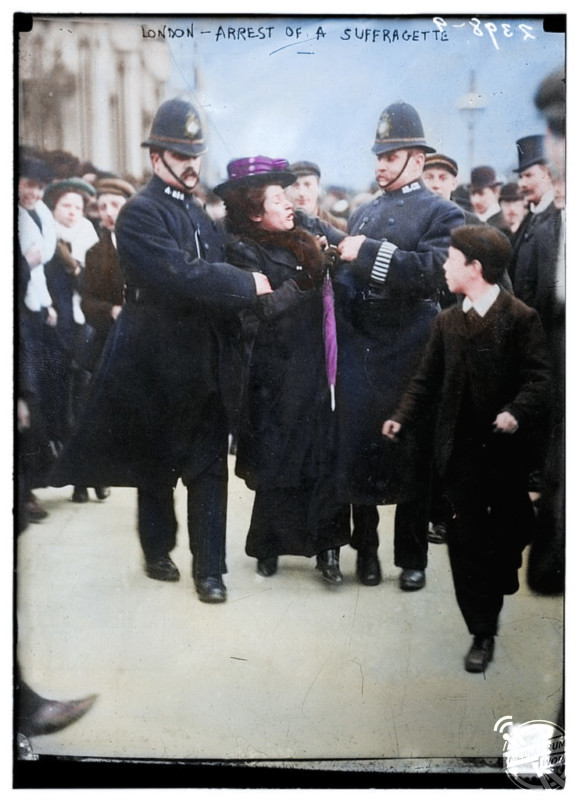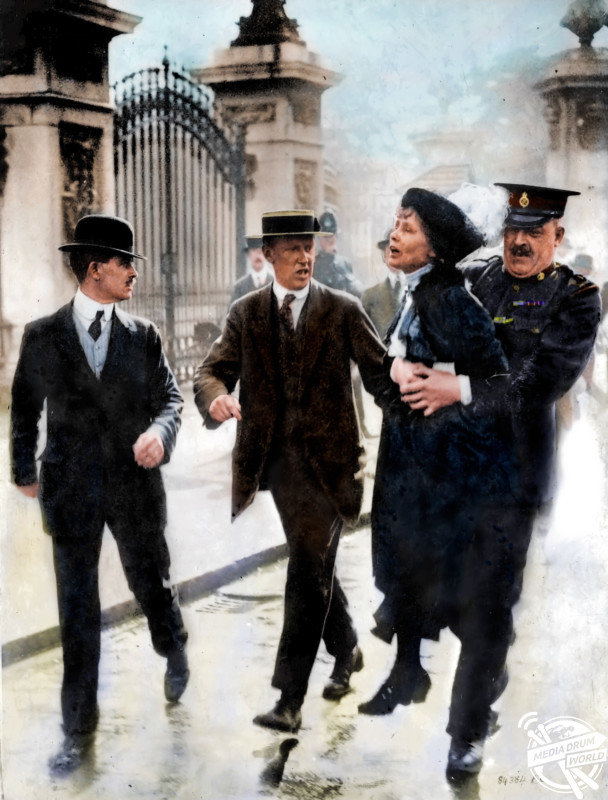By Rebecca Drew
STRIKING images showing the militant campaign for women’s suffrage lead by Emmeline Pankhurst have been revealed in vibrant colour ahead of her birthday tomorrow.
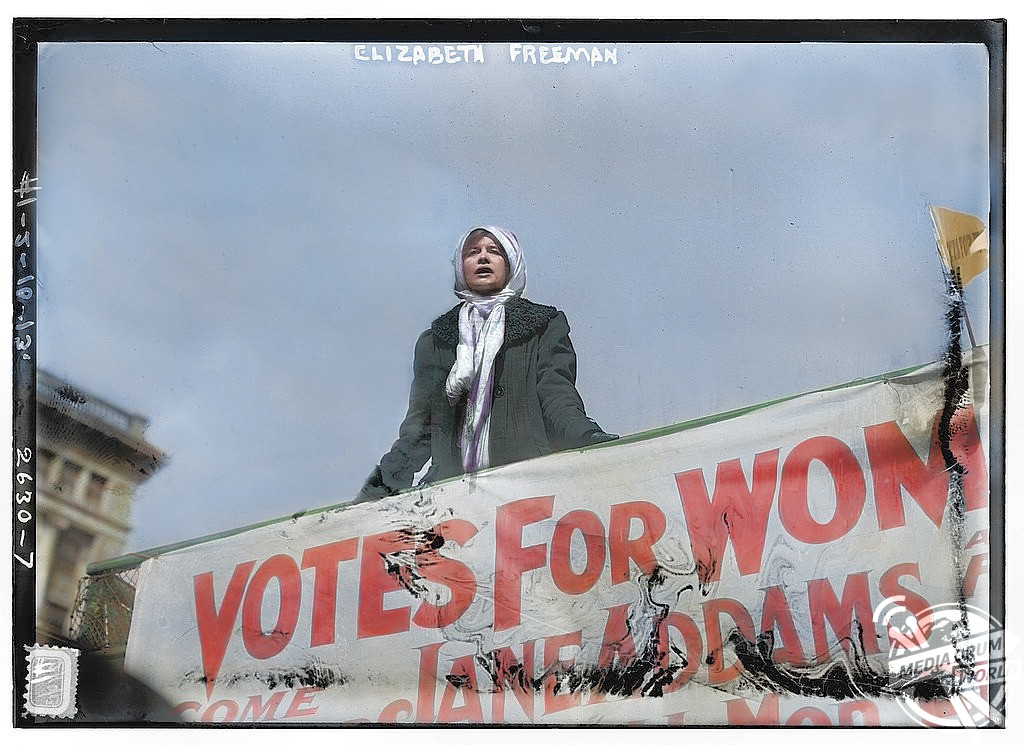
The stunning photographs show figurehead, Mrs Pankhurst being dragged away by a policeman as crowds of suffragettes gathered outside the gates of Buckingham Palace in 1914 to demand the King for votes for women. Another picture shows Emmeline addressing a large male gathering of smartly dressed bankers on Wall Street.
Other fascinating pictures show women wearing placards on London streets and walking through their neighbourhoods in protest to a host of male onlookers.
The images have been brought to life by electrician, Royston Leonard (54) from Cardiff, Wales, UK. To colourise the images, Royston used a computer programme called Paint Shop Pro which took him 60-hours to complete.
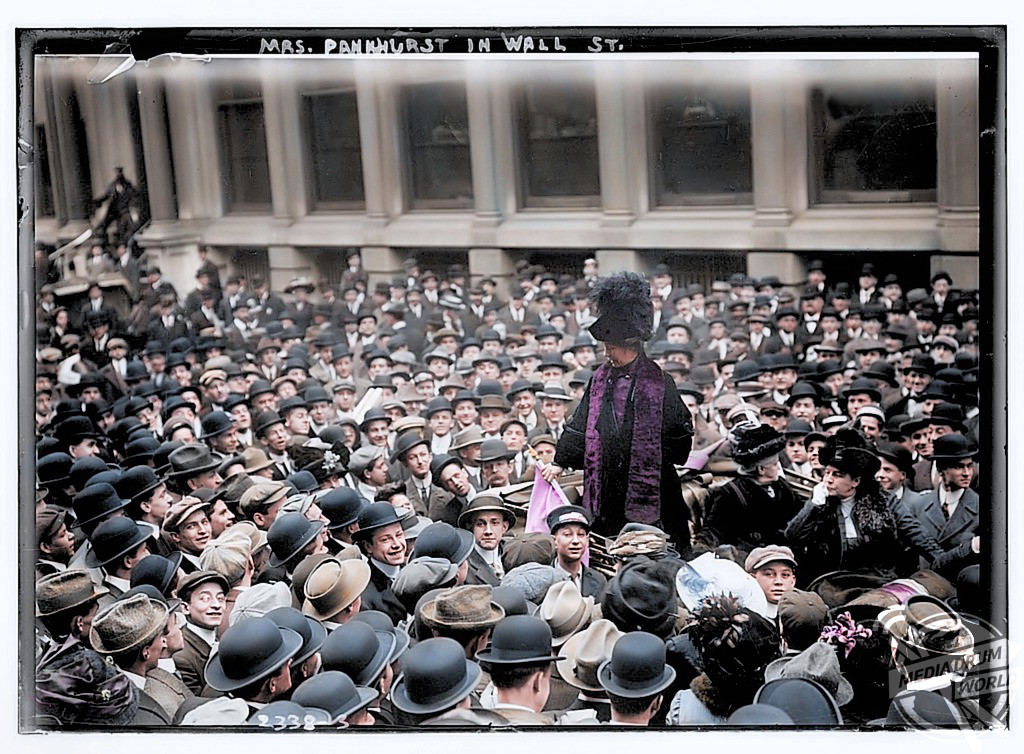
“These pictures show the fight to be heard and seen by a government that wanted women to remain invisible,” said Royston.
“The women were campaigning for the vote and a voice and the fight to have both.
“They showed people on the streets that they wanted to vote.
“The most difficult thing was getting the pictures and colours to look correct.”
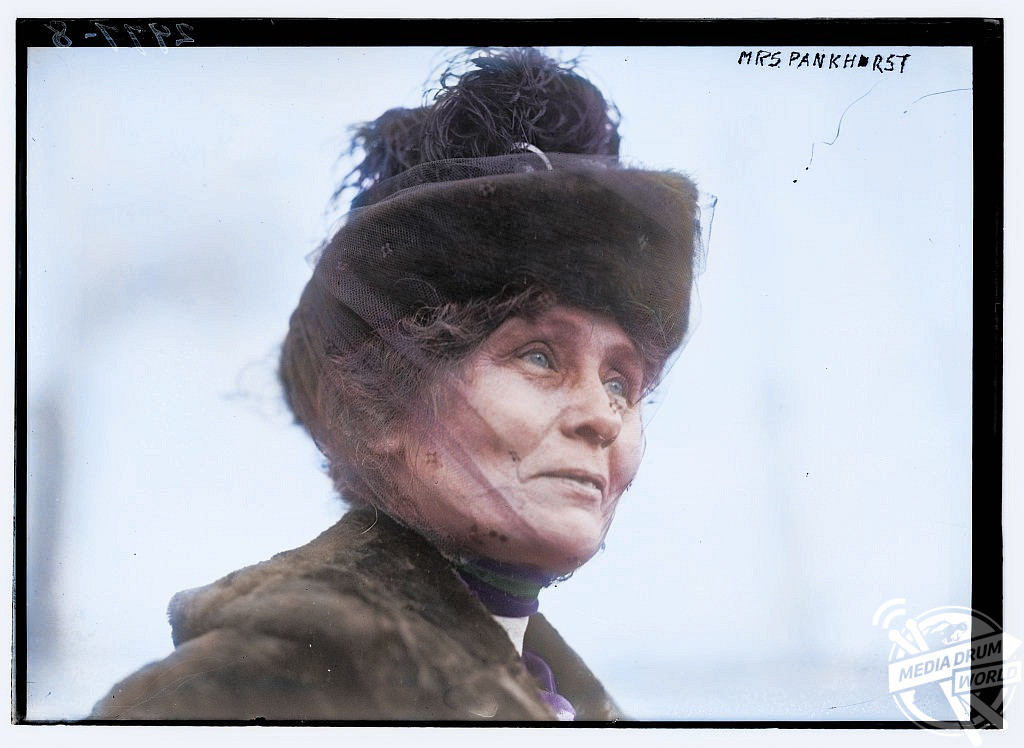
In 1832, Mary Smith delivered the first women’s suffrage petition to parliament, later that same year the General Reform Act confirmed that women would remain excluded from the vote. In 1866, The National Society for Women’s Suffrage was formed.
The National Union of Women’s Suffrage Societies (NUWSS) was formed in 1897 and lead by Millicent Garrett Fawcett. In 1903, Emmeline Pankhurst set up the Women’s Social and Political Union (WSPU) for a more militant approach to gaining the vote.
In 1918, The Representation of the People Act was passed, allowing men over 21 and women over 30 to vote. An amendment to the act 10-years later allowed everyone over 21 to vote.

“For me, colourisation is a hobby and I learnt it by trying ideas out on my own,” added Royston.
“I just colour, the message is already there for all to see in the pictures themselves but I do feel that it helps the younger generation understand that what happened was real and not just art from long ago.
“I started out doing colourisation for my family and friends but now I contribute to three Facebook pages.”
